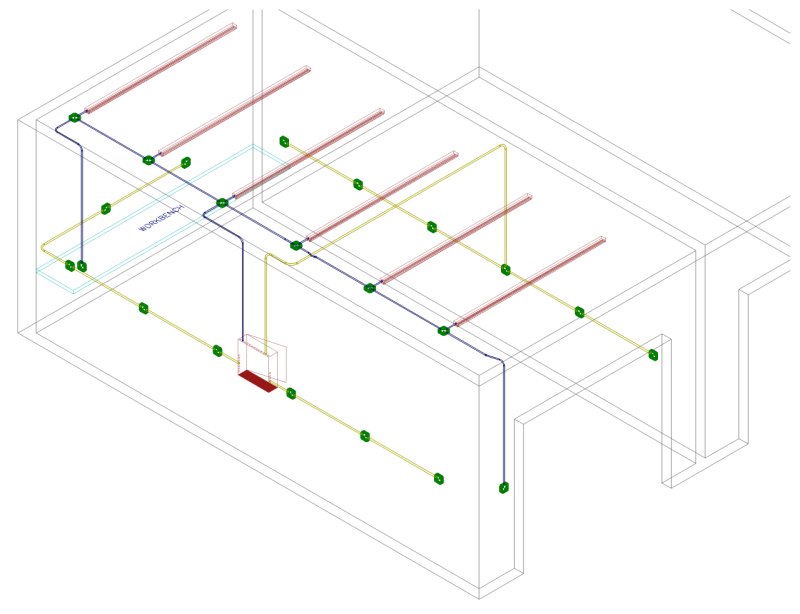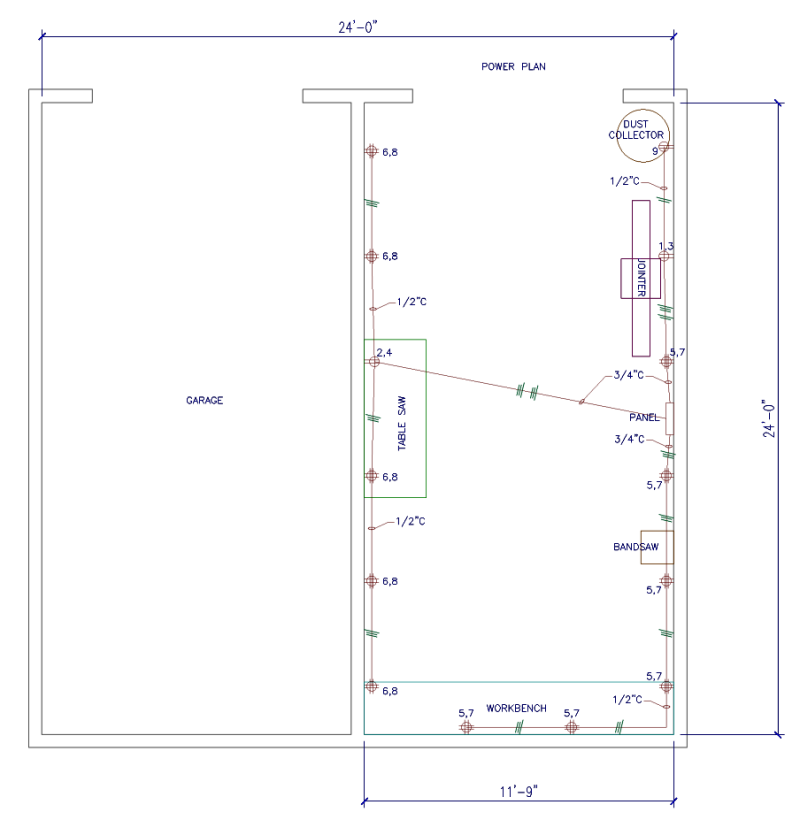In a different thread, John Lanciani made the above suggestion, but there wasn't much said about his suggestion. I was planning on wiring my new shop (from scratch) this way only I was going to provide potential drops every 8 feet. I am splitting up sides of the shop to limit the outlets on any one circuit to less than 10.
I can't find anything in NEC search that says I can't derive 120 VAC for my outlets from a 240 VAC drop. As long as I provide a 20 amp breaker on each leg of the 240 VAC, I should be OK. That dual 20 amp breaker would still have both sides mechanically tied together, which could be a bit of a nuisance for a 120 VAC overload; all outlets on both sides will lose power.
Its a small shop and just me working in it, so I'm sure that I won't be tripping any breakers anyway. As I add machinery, the loads will be evaluated.
I'd be interested in reasons for or against doing this surface-mount wiring setup.







 Reply With Quote
Reply With Quote





